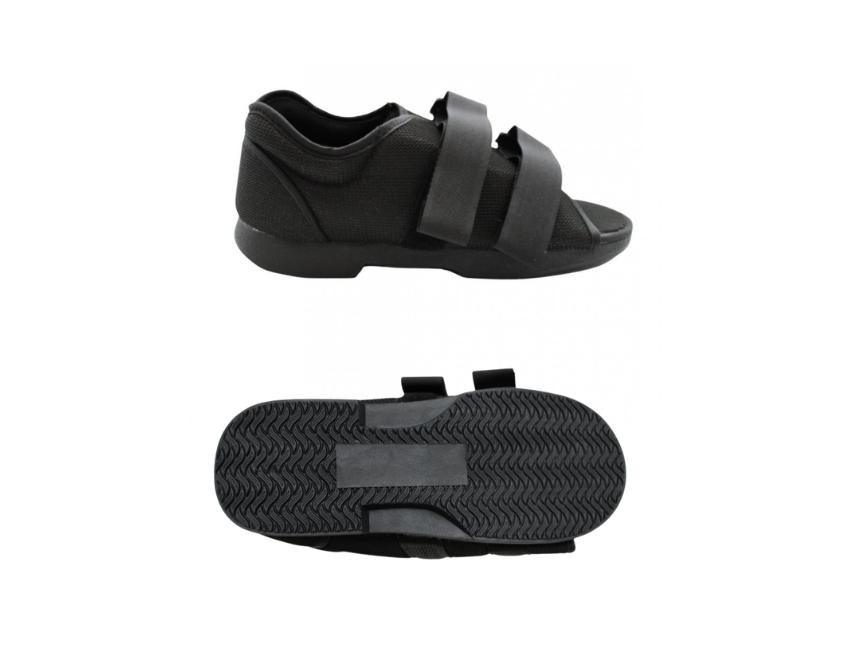
How to Identify, Treat, and Recover from a Broken Toe
Breaking a toe is more common than you might think. Although often ignored or treated as a minor issue, a fractured toe can lead to complications such as chronic pain or mobility difficulties if not properly treated. This article will help you identify the signs of a broken toe, explain the best treatment options, and introduce products that can speed up your recovery.
What Is a Broken Toe?
A broken toe, or toe fracture, is a bone injury that occurs in one of the toes. This fracture can result from direct impact, such as hitting a piece of furniture, dropping a heavy object on the foot, or twisting the toe during physical activities. Depending on the severity, it can be a simple fracture, where the bones remain aligned, or a more complex fracture with bone displacement.
How to Know If You Have a Broken Toe?
The symptoms of a broken toe can vary depending on the severity of the injury. Some of the most common signs include:
- Intense and immediate pain in the toe after the impact;
- Swelling and redness in the affected area;
- Bruising or purple discoloration around the toe;
- Difficulty moving the toe or walking;
- Visible deformity, such as a misaligned toe.
If you’re unsure about the severity of the injury, it’s essential to see a doctor for an accurate diagnosis. X-rays are often required to confirm the fracture.
What to Do If You Break a Toe?
If you suspect you have a broken toe, follow these initial steps:
- Immobilize the toe – Avoid moving it to prevent further damage.
- Apply ice – Wrap ice in a towel and apply it to the area for 15–20 minutes to reduce swelling and pain.
- Elevate the foot – Keep it elevated to minimize swelling.
- Avoid putting weight on the foot – Whenever possible, use crutches or supports when walking.
- Seek medical help – A professional will assess the severity of the fracture and recommend the appropriate treatment.
Broken Toe Treatment Options
The treatment for a broken toe depends on the type of fracture:
1. Simple Fractures
- Usually, the toe can be immobilized using buddy taping, which involves taping it to the adjacent toe to keep it stable while healing.
- To facilitate recovery, a post-op shoe may be necessary to protect the foot and minimize impact while walking.
2. Complex or Displaced Fractures
- These may require manual realignment (reduction) or, in severe cases, surgical intervention.
- After surgery, using a short inflatable Walker boot is essential to immobilize the foot and ensure proper recovery.
3. Fractures of the Pinky Toe
- The pinky toe is harder to immobilize. In these cases, using a reinforced post-op shoe is recommended to reduce impact and protect the area during healing.
Differences Between Post-Op Shoes
After surgery, specialists often recommend post-op footwear to provide greater comfort and aid in rehabilitation. However, each model has distinct features, making it crucial to understand the differences to select the most suitable option. Check out the available alternatives at Loja Ortopédica:
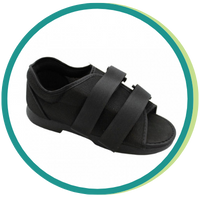
Ambidextrous Post-surgical Shoe
Designed to immobilize and protect the foot after a broken toe.
Provides support during recovery and reduces impact while walking.
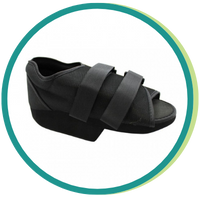
Post-surgical Shoe with Heel
Specifically for recovery from bunion surgeries.
Features a design that relieves pressure on the affected area.
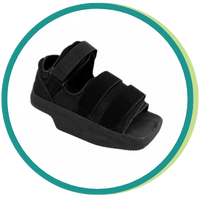
Heelless Post-surgical Shoe
Designed for people with wounds or specific heel conditions.
Ideal for keeping the affected area protected and comfortable.
How Long Does Recovery Take?
The recovery time for a broken toe depends on the severity of the fracture:
Simple fractures typically take 4 to 6 weeks for the bone to heal completely.
More severe fractures or those requiring surgery may take 8 to 12 weeks to fully recover.
During this period, it is essential to:
- Avoid unnecessary strain;
- Use appropriate orthopedic footwear or boots;
- Follow medical and physiotherapy recommendations.
How to Prevent Toe Fractures?
While not all fractures can be avoided, some precautions can reduce the risk:
- Wear Proper Footwear – Avoid walking barefoot at home or wearing inadequate shoes.
- Remove Obstacles – Keep spaces organized to prevent collisions or falls.
- Be Cautious During Physical Activities – Use protective gear for high-impact sports.
Conclusion
A broken toe can be an uncomfortable injury, but with proper diagnosis and treatment, you can fully recover without complications. Knowing how to identify the symptoms, acting quickly, and using the right orthopedic products—such as Walker boots or post-op shoes—is essential for pain relief and an efficient recovery.If you’re looking for practical and comfortable solutions for foot fracture treatment, explore the options available at Loja Ortopédica and choose the product that best meets your needs. Don’t ignore foot pain—take care of your health!



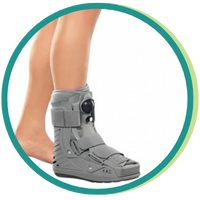

No Comments